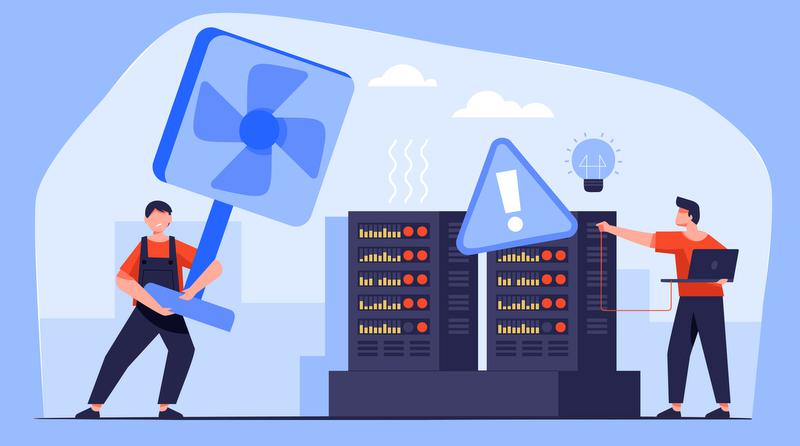Technology Industry and Climate Goals

- 03 Jun 2025
Introduction
The global technology sector, while being a driver of economic growth and innovation, is also a significant contributor to greenhouse gas (GHG) emissions. With the rapid expansion of cloud computing and digital services, data centres—the backbone of the digital economy—consume massive amounts of energy, primarily for cooling.
A recent landmark study by Microsoft and WSP Global, published in Nature, highlights the potential of advanced cooling technologies to significantly reduce the environmental footprint of data centres.
The Problem: Heat and Emissions from Data Centres
- Energy Consumption: In modern data centres, cooling systems consume nearly as much electricity as computing itself.
- Heat Management: As chips become smaller and faster, they generate more heat. Without effective cooling, systems overheat, leading to failure and reduced efficiency.
- Climate Targets: The Information and Communications Technology (ICT) sector aims to reduce emissions by 42% by 2030 (from 2015 levels) and achieve net-zero by mid-century.
Cooling Innovations: The Game-Changers
1. Cold Plate Cooling (Direct-to-Chip Cooling)
- Coolant flows through microchannels on a plate attached directly to the chip.
- Reduces the need for energy-intensive air conditioning.
- Heat is transferred away efficiently and silently.
2. Immersion Cooling
- Entire hardware systems are submerged in thermally conductive, non-conductive liquid.
- Uses one-phase (liquid remains stable) or two-phase (liquid vaporises and condenses) systems.
- Ensures near-total heat dissipation and longer component life.
Environmental Impact (Study Findings):
Compared to traditional air cooling:
- GHG Emissions ↓ by 15–21%
- Energy Use ↓ by 15–20%
- Water Consumption ↓ by 31–52%
With 100% renewable energy:
- Emissions ↓ by 85–90%
- Water use ↓ by 55–85%
Tech Industry’s Broader Climate Actions
- Carbon Credits: Google, Netflix, and others invest in verified carbon offsets.
- Blockchain for Carbon Markets: Ensures transparency; used by Indian IT firms for ESG compliance.
- Renewable Energy: Tech giants like Apple, Meta, and Amazon power operations with green energy.
- Indian Leadership: Infosys, Reliance, and Tech Mahindra lead in green operations using AI and energy-efficient systems.
Challenges and Limitations
- Lifecycle Trade-offs: Coolant production and disposal can offset benefits.
- Capital Cost: Retrofitting old data centres is expensive.
- Regulatory Issues: Lack of global standards for coolants and fragmented carbon credit policies.
- Dependence on Grid: Benefits are reduced if electricity is still coal-based.
- Slow Deployment: Complex designs and supply chain delays hinder implementation.
Way Forward
- Life Cycle Assessments (LCAs): Evaluate true environmental costs over the product lifecycle.
- Unified Carbon Standards: Develop global frameworks for carbon credit verification and climate disclosures.
- Government Support: Provide tax incentives, green finance, and subsidies for early adopters.
- Strengthen R&D: Focus on low-impact coolants and AI-driven cooling systems.
- Public-Private Partnerships: Encourage innovation through collaboration among tech firms, startups, and governments.
Conclusion
The technology industry stands at a crossroads where sustainable innovation is essential. Cooling technologies like cold plates and immersion cooling, coupled with renewable energy adoption and carbon offset mechanisms, can enable the ICT sector to significantly reduce its environmental footprint. With effective policy support and strategic innovation, the tech sector can become a pillar of global climate action.
